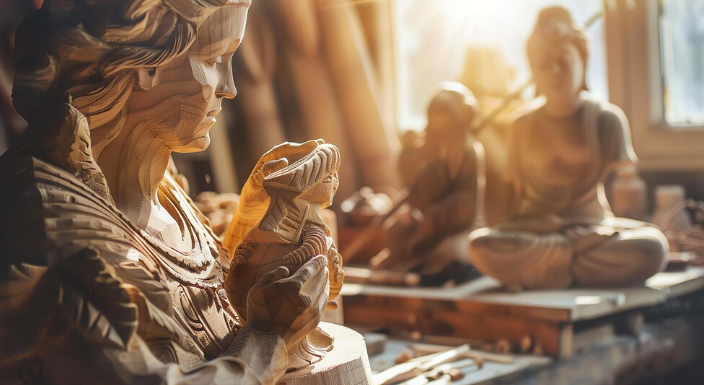Introduction
In the heart of Rome where cobblestone streets whisper secrets of centuries past lies a hidden gem—an ancient library known as Biblioteca Antiquità. Its oak shelves sag under the weight of leather-bound tomes their pages yellowed by time. As I stepped inside the scent of parchment enveloped me and I felt like an explorer unearthing forgotten treasures.
The curator Signora Isabella guided me through dimly lit corridors. Her eyes sparkled with reverence as she recounted tales of philosophers poets and conquerors who once roamed these halls. Each book held a piece of antiquity—a fragment of wisdom a glimpse into vanished civilizations.
Unraveling Antiquità
The Greco-Roman Tapestry:
Classical antiquity spanning from the 8th century BC to the 5th century AD weaves together the rich cultures of ancient Greece and Rome. These civilizations birthed philosophy art and governance that echo through time.
Explore the Parthenon’s majestic columns and the Colosseum’s grandeur—symbols of this era’s enduring legacy.
Antiquity in Every Stone:
Wander through the ruins of Pompeii where Vesuvius froze a moment in time. Imagine bustling streets frescoed villas and amphitheaters echoing with laughter.
Unearth artifacts—a chipped amphora a mosaic depicting Medusa’s gaze—and feel the pulse of antiquity.
The Renaissance Resurgence:
The Renaissance like a phoenix rose from classical ashes. Artists like Leonardo da Vinci and Raphael drew inspiration from ancient sculptures and manuscripts.
Botticelli’s “The Birth of Venus” whispers secrets of antiquity her shell-born beauty echoing Aphrodite’s myth.
Preserving Antiquities: A Race Against Time
1. The Battle Against Decay
Antiquities face an unyielding adversary: time itself. The elements—wind rain and sun—gradually erode ancient structures sculptures and manuscripts. Preservationists work tirelessly to protect these fragile artifacts.
Conservation Laboratories: Imagine a dimly lit room where experts delicately restore a mosaic fragment or stabilize a crumbling fresco. These laboratories are sanctuaries for antiquities. They use state-of-the-art techniques to repair damage and halt deterioration.
Climate-Controlled Environments: Museums and archives maintain precise temperature and humidity levels. This prevents parchment from becoming brittle and marble from developing cracks. The Louvre for instance houses the Venus de Milo in a carefully controlled chamber.
2. Legal Safeguards
UNESCO World Heritage Sites: These sites—such as Petra in Jordan or Machu Picchu in Peru—are globally recognized for their cultural significance. International cooperation ensures their protection. Strict regulations limit construction near these sites and safeguard their integrity.
Cultural Property Laws: Nations enact laws to prevent looting and trafficking of antiquities. These laws empower customs officials to seize illegally acquired artifacts. The repatriation of stolen antiquities to their countries of origin is an ongoing battle.
3. Digital Preservation
Virtual Repositories: In the digital age we create virtual museums. High-resolution scans 3D models and interactive platforms allow us to explore antiquities remotely. The British Museum’s online collection is a testament to this effort.
Archiving Knowledge: Scholars document every detail—an inscription’s translation a pottery shard’s pattern. This knowledge transcends generations ensuring that even if an artifact crumbles its essence lives on.
As we champion the cause of antiquity preservation let us remember that these artifacts are bridges connecting us to our past. Their whispers echo across millennia urging us to be stewards of history.
Conclusion: Echoes Across Millennia
As we trace the contours of antiquity we realize that it isn’t confined to marble statues or crumbling scrolls. It lives in our architecture our language and our quest for knowledge. Antiquità isn’t merely a relic; it’s a bridge connecting us to our roots.






